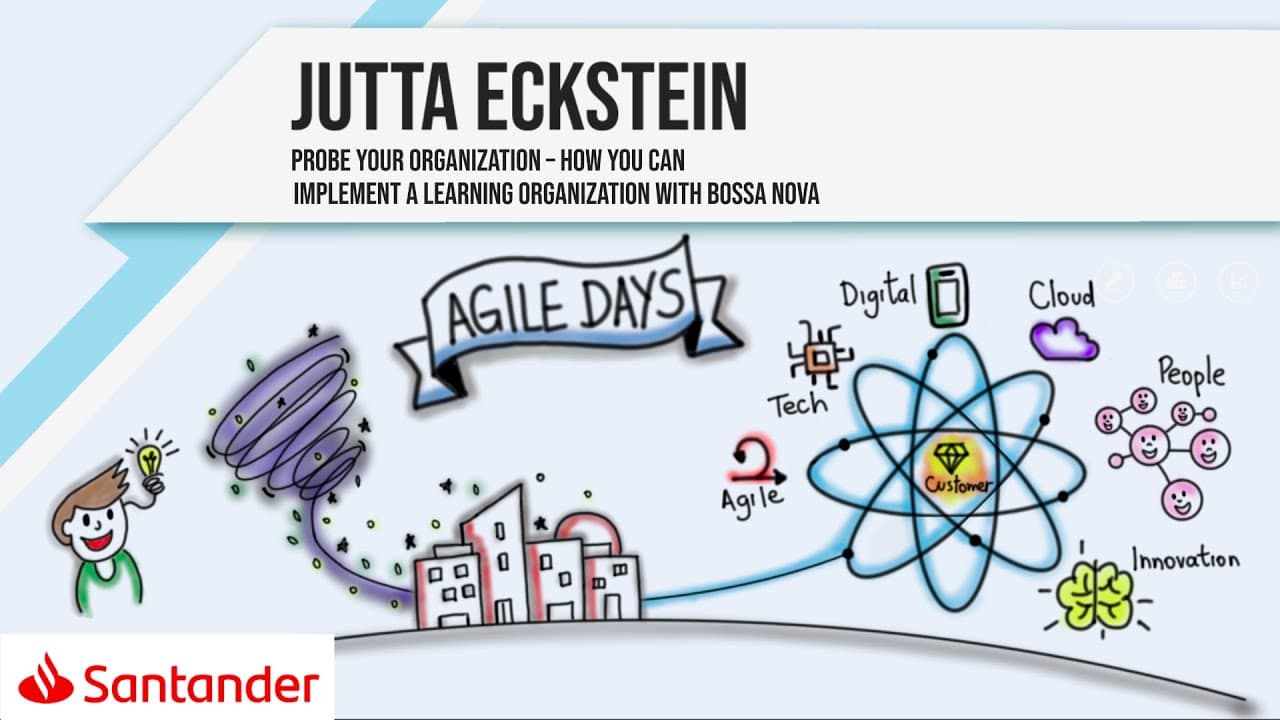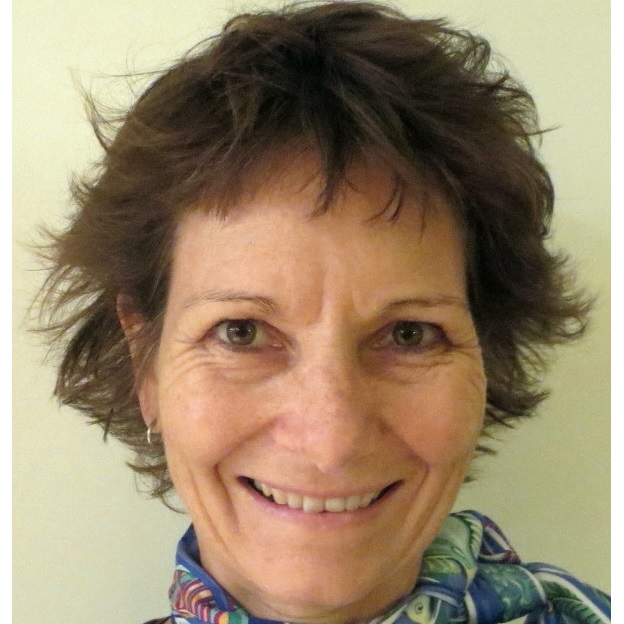What I want to talk to you about today is how you can probe your organization, which refers back to my latest book—the one that Alejandro just mentioned—on company-wide agility, beyond budgeting, open space, and sociopathy. You might think we are putting a lot of buzzwords together here, but what I really want to focus on today is how you can use these concepts to implement a learning organization through what we call Bossa Nova, which is a combination of company-wide agility. I will get to that in a minute.
First of all, why is this important? I assume you have heard this discussed frequently over the past few days or will hear more about it. The reason is that we are living in what’s called a VUCA world—a world that is volatile, uncertain, complex, and ambiguous. Many people have talked about this for quite some time, but it became truly evident during the pandemic. Think back to last year at this time—you had likely finished many of your plans for 2020, including budgets, product developments, and other key initiatives. By March, it became clear that all the time spent planning was wasted.
To deal with this VUCA world, we need to be agile as a company. By "agile," I don’t mean simply applying Scrum everywhere, as that wouldn’t get us very far. Instead, I mean being flexible, adaptive, responsive, fast, and nimble. Looking at just one method will not be enough—we need to take a broader perspective. A true learning organization continuously adapts, responds quickly to change, and remains agile.
How can this happen? If, for example, your board of directors started running meetings with a backlog and a Scrum Master, it might make the meetings more effective or even more enjoyable. However, it wouldn’t make the company itself more agile. We have to look elsewhere—this is where Bossa Nova comes in, bringing different streams together and viewing the company from multiple angles.
If you still fix your budget on an annual basis, it becomes difficult to be flexible and adjust to real-time changes. This is where Beyond Budgeting plays a role. I won’t go into too much detail on this, as you will hear from Bjarte Bogsnes right after me, but keep in mind that Beyond Budgeting is a crucial element of being an agile company.
Looking at the "OS" in Bossa Nova—Open Space—this focuses on leveraging people's passion and innovative potential rather than restricting them with rigid job descriptions that limit their ability to contribute beyond predefined roles.
The "S" stands for Sociocracy, which examines how power is distributed within the organization. If decision-making is too centralized or top-down, companies often become too slow to respond effectively to VUCA conditions.
Finally, the "A" stands for Agile itself, which is the foundation of everything you are discussing at this event. Agile means continuously inspecting, adapting, and learning. This is key. If you apply these different perspectives to company-wide agility, you can embed learning into your organization as a natural part of how it operates.
Although it has been quite some time since Peter Senge made his famous statement in 1990, his book The Fifth Discipline is still highly relevant. We need learning organizations—organizations that encourage adaptive and generative learning, that push employees to think outside the box, and that enable collaboration across teams to find the best solutions to problems.
Now, how do companies implement this in practice? I want to share two examples to illustrate what this could look like. The first example relates to something familiar to all of you: an expense sheet submission. Many companies have policies, procedures, and rules around employee expenses that send an implicit message: "We trust you to manage a million-dollar project successfully, but we don’t trust you to book a reasonable hotel or buy a decent camera."
A company I know, called Itacho, faced this issue. Despite having "agility" in their name, employees felt that their expense policies didn’t reflect an agile culture. To address this, they implemented three simple principles for travel expenses:
- Spending must be legal—no corruption or unethical behavior.
- Spending should be done in a sensitive way—though what this means is not explicitly defined.
- Employees should take care of themselves while traveling.
When I spoke with the CEO six months later, he shared an interesting insight: about one-third of employees traveled first class, while two-thirds traveled second class. Surprisingly, it wasn’t executives like him traveling first class—it was the consultants, who spent the most time on the road. Employees agreed this made sense; "taking care of yourself" meant different things for different roles. The key learning here: treating everyone fairly does not mean treating everyone the same.
A second example comes from Miles, a Norwegian company that addressed expense management differently. They adopted a single principle: all expenses must be published on the company intranet. This form of peer accountability meant that employees naturally considered whether their expenses were reasonable before submitting them.
Now, let’s move on to performance evaluations and salary increases. A German company called Mayflower recognized that its approach to annual reviews and bonuses was not agile. A small group of employees proposed a different approach, starting by making their salaries publicly available. Initially, just a handful of people participated, but soon the entire company adopted the practice.
Over time, they developed a structured process: for each salary discussion, an elected salary representative oversees the process. The employee under review invites two trusted colleagues, along with the branch manager, to discuss contributions to company goals, collaboration with others, and customer value. Each person privately proposes a salary adjustment, which is then discussed openly before reaching a consensus. At the end of the cycle, all salary increases are balanced against available budget constraints.
Mayflower’s approach embodies key values essential for company-wide agility: transparency, self-organization, continuous learning, and customer focus. These values are fundamental to creating an agile organization.
Transparency, in particular, is often misunderstood. It doesn’t mean that everything must be visible to everyone at all times. Rather, it means that the people who need information to make decisions have easy access to it. It’s a two-way process—seeking and providing information as needed.
Where do you start with such a transformation? The truth is, you can start anywhere—by changing your strategy, structure, or processes. These elements are interconnected; changing one will inevitably affect the others. In the past, many believed strategy had to come first, but today we understand that change is iterative and interdependent.
The key is to reflect on your current situation, develop a hypothesis, experiment, and reflect again. For example, you could test approaches like those used by Itacho, Miles, or Mayflower. Run an experiment for three months with a few teams, then assess its impact. If it works, scale it further. And, crucially, share your findings—not only within your company but with the broader community. Without sharing, we wouldn’t know about these examples today.
For structured experimentation, we use a probe format: define the background, formulate a hypothesis, run a limited-time experiment, and analyze the results before rolling it out more widely.
Ultimately, a learning organization is a group of people continuously improving their capabilities to create what they envision. This means regularly reflecting on your situation, testing small changes, and evaluating their impact. This cycle of learning and adapting is what makes a company truly agile.
Everything I’ve discussed today is based on our book about company-wide agility. As you can see on this slide, we are currently translating the book into Spanish. About one-third of it has been translated so far. Since we are using an agile approach to translation, you can access the book now and receive all updates for free until it's completed. You can scan the QR code or visit Leanpub for more details. Thank you very much.



